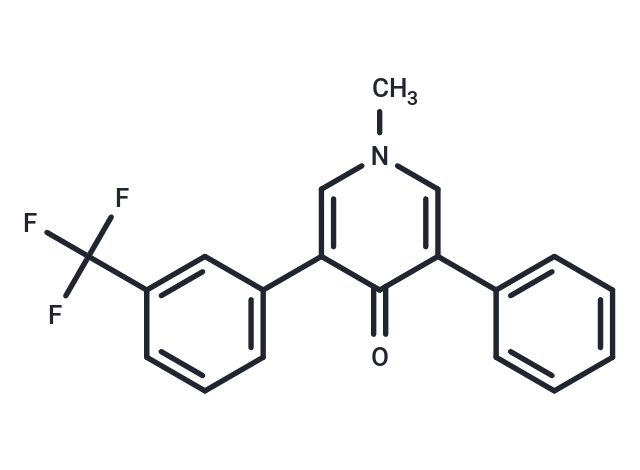Shopping Cart
Remove All Your shopping cart is currently empty
Your shopping cart is currently empty
Fluridone (EL-171) is a potent inhibitor of abscisic acid (ABA) synthesis, inhibits the expression of AchnFAR and TF genes, and reduces the formation of primary alcohol. Fluridone is often used as an aquatic herbicide to control invasive plants and is also used to control species such as hydra and Eurasian hydra.

| Pack Size | Price | USA Warehouse | Global Warehouse | Quantity |
|---|---|---|---|---|
| 100 mg | $41 | In Stock | In Stock | |
| 500 mg | $96 | In Stock | In Stock |
| Description | Fluridone (EL-171) is a potent inhibitor of abscisic acid (ABA) synthesis, inhibits the expression of AchnFAR and TF genes, and reduces the formation of primary alcohol. Fluridone is often used as an aquatic herbicide to control invasive plants and is also used to control species such as hydra and Eurasian hydra. |
| Targets&IC50 | Phytoene desaturase:0.03 μM(ki) |
| In vitro | Fluridone is cytotoxic to the cyanobacterium Anacystis nidulans (LC50 = 0.125 µM).[1][4] Fluridone (50 and 100 µM) decreases β-carotene levels and induces accumulation of phytofluene and phytoene in T. aestivum seedlings grown in the dark.[2] It reduces levels of the plant hormone abscisic acid in hydrated and dehydrated V. faba leaves when used at a concentration of 10 µM.[3] |
| In vivo | Fluridone has acute toxicity against several species of invertebrates and fish (median LC50s = 4.3 and 10.4 mg/L, respectively).1,4 Formulations containing fluridone have been used as aquatic herbicides.[1][4] |
| Synonyms | EL-171 |
| Molecular Weight | 329.32 |
| Formula | C19H14F3NO |
| Cas No. | 59756-60-4 |
| Smiles | Cn1cc(-c2ccccc2)c(=O)c(c1)-c1cccc(c1)C(F)(F)F |
| Storage | Powder: -20°C for 3 years | In solvent: -80°C for 1 year | Shipping with blue ice/Shipping at ambient temperature. | |||||||||||||||||||||||||||||||||||
| Solubility Information | DMSO: 250 mg/mL (759.14 mM), Sonication and heating to 60℃ are recommended. | |||||||||||||||||||||||||||||||||||
Solution Preparation Table | ||||||||||||||||||||||||||||||||||||
DMSO
| ||||||||||||||||||||||||||||||||||||
| Size | Quantity | Unit Price | Amount | Operation |
|---|

Copyright © 2015-2026 TargetMol Chemicals Inc. All Rights Reserved.